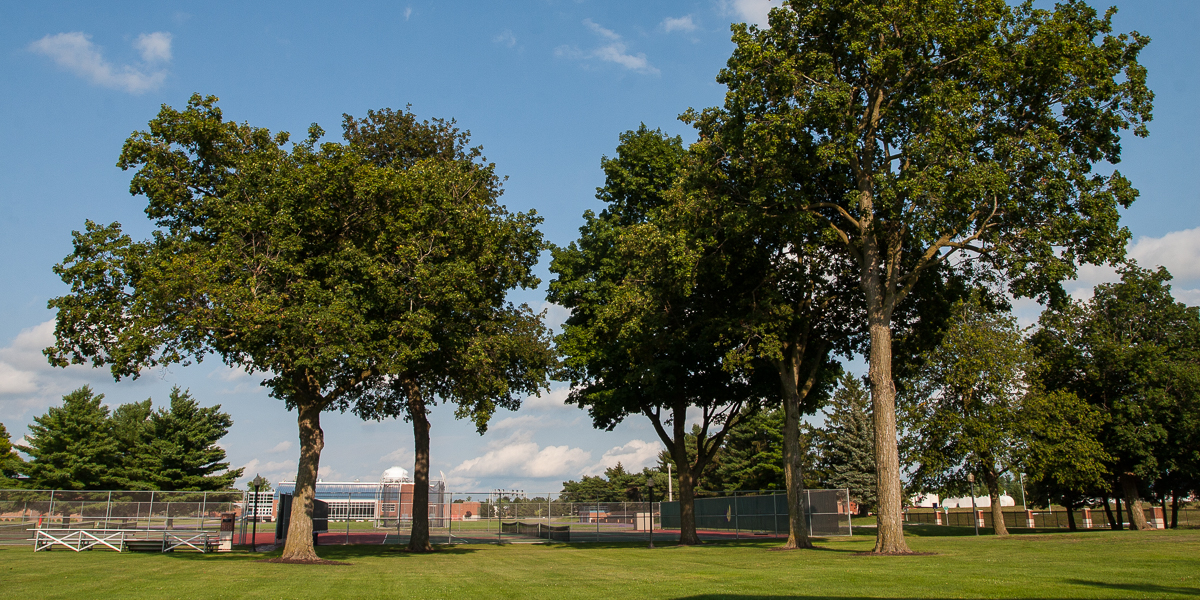Knox Stories
Alumni Find Success in the Museum Field as Knox Bolsters Program
The art museum studies program ensures students are well-equipped for dynamic roles in the evolving museum field.

Office of Communications
2 East South Street
Galesburg, IL 61401


Midwestern prairies have experienced seasonal burns for eons.
Knox College has conducted annual springtime burns on its restored prairies at the Green Oaks Biological Field Station for more than 50 years.
James Munro studied at Knox in the 1970s and has lived and worked in the "prairie state" for the past 40 years.
But there's a first time for everything, and for Munro, 2017 was his very first prairie burn at Green Oaks.
"I never did a prairie burn as an undergraduate," said Munro, standing in the middle of a charred field of tallgrass prairie at this year's burn in March. "I'm coming up on a major milestone reunion (40th at Homecoming 2017), and I put this on my bucket list."
Munro watched as a dozen students and biology professor Stuart Allison held a controlled burn of West Prairie. At about 20 acres, West Prairie is the largest section of restored prairie at Green Oaks.
The 700-acre field station and research area in central Knox County includes forest, prairie and lake habitats. Seeds produced at Green Oaks have helped restore prairies throughout the region. Numerous research projects have been conducted there, and it's the site for an interdisciplinary course, Green Oaks Term.
"When I was a student, I knew about Green Oaks, but I never did the burn," Munro said. "I majored in Asian Studies and my classes were all on the other side of campus" from the Umbeck Science-Mathematics Center.
"This year, I had the time and the inclination. I wrote to Knox's Alumni Office, and they gave me Stuart's name and I wrote to him. He wrote back and here I am."
"I wish I had done this as an undergraduate," Munro said. "It's something to see."
Allison and the students had their hands full, as the fire jumped across a road from the east section of West Prairie to its western section, before burning itself out at the boundary between the tall grass prairie and the surrounding forest.
"It's not a problem if the fire gets into the woods," Allison said. "But we don't want it to go too far."
Students use rubber "flappers" and backpack water tanks to control the edge of the burn area. "If it gets too hot, we let it burn itself out."
"Being physically involved with conservation makes you more aware of everything that needs to be done," said Allison, Watson Bartlett Professor of Biology and Conservation and Director of Green Oaks. Allison has written extensively on ecological restoration.
For Munro, it was an opportunity to experience an iconic Knox event—the Prairie Burn—which inspired the Prairie Fire nickname for the College's sports teams.
"I had to explain this to one of my cousins," Munro said. "I said that Knox has this prairie, and we set fire to it, and it's a big deal. It's really cool. I don't have a better word for it."
Below, scenes from the 2017 Prairie Burn at Green Oaks...



Published on April 05, 2017

 "If it gets too hot, we let it burn down."—Biology Professor Stuart Allison
"If it gets too hot, we let it burn down."—Biology Professor Stuart Allison

 "It's really cool. I don't have a better word for it."—James Munro '77
"It's really cool. I don't have a better word for it."—James Munro '77

 "Being physically involved with conservation makes you aware of everything that needs to be done."—Biology Professor Stuart Allison.
"Being physically involved with conservation makes you aware of everything that needs to be done."—Biology Professor Stuart Allison.